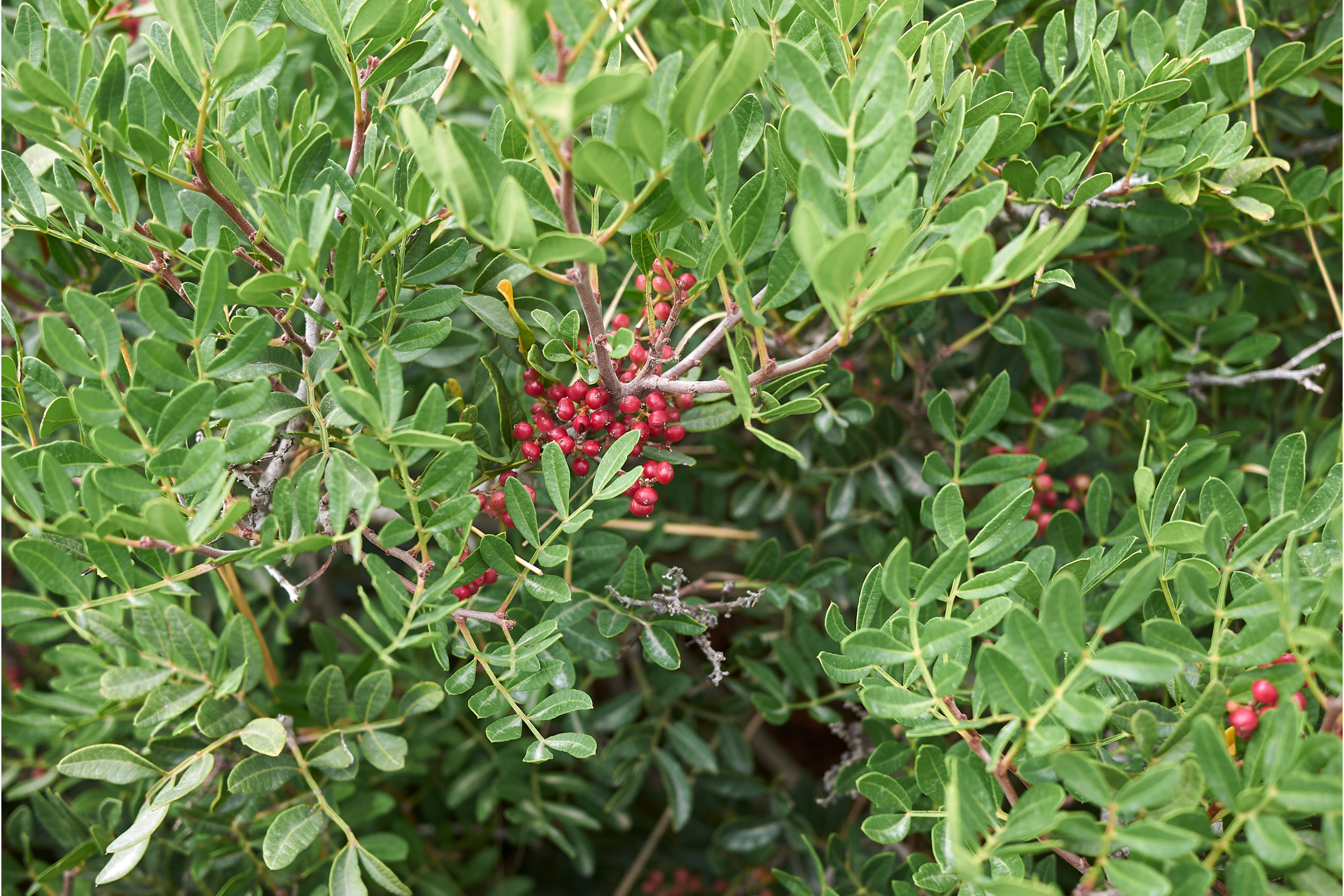Mastic Tree
(Pistacia lentiscus)

Description
Pistacia lentiscus (also lentisk; mastic; Greek: μαστίχα mastíkha;Turkish: damla sakızı) is a dioecious evergreen shrub or small tree of the genus Pistacia, growing up to 4 m (13 ft) tall which is cultivated for its aromatic resin, mainly on the Greek island of Chios and around the Turkish town of Cesme. The plant is evergreen, from 1 to 5 m high, with a strong smell of resin, growing in dry and rocky areas in Mediterranean Europe. It resists mild to heavy frosts but prefers milder winters and grows on all types of soils, and can grow well in limestone areas and even in salty or saline environments, making it more abundant near the sea. It is also found in woodlands, dehesas (almost deforested pasture areas), Kermes oak woods, wooded areas dominated by other oaks, garrigues, maquis shrublands, hills, gorges, canyons, and rocky hillsides of the entire Mediterranean area. It is a typical species of Mediterranean mixed communities which include myrtle, Kermes oak, Mediterranean dwarf palm, buckthorn and sarsaparilla, and serves as protection and food for birds and other fauna in this ecosystem. It is a very hardy pioneer species dispersed by birds. When older, it develops some large trunks and numerous thicker and longer branches. In appropriate areas, when allowed to grow freely and age, it often becomes a tree of up to 7 m. However, logging, grazing, and fires often prevent its development. The leaves are alternate, leathery, and compound paripinnate (no terminal leaflet) with five or six pairs of deep-green leaflets. It presents very small flowers, the male with five stamens, the female with a 3-part style. The fruit is a drupe, first red and then black when ripe, about 4 mm in diameter. The fruit, although not commonly consumed, is edible and has a tart raisin-like flavour. Pistacia lentiscus is native throughout the Mediterranean region, from Morocco and the Iberian peninsula in the west through southern France and Turkey to Iraq and Iran in the east. It is also native to the Canary Islands. The aromatic, ivory-coloured resin, also known as mastic, is harvested as a spice from the cultivated mastic trees grown in the south of the Greek island of Chios in the Aegean Sea, where it is also known by the name "Chios tears". People in the Mediterranean region have used mastic as a medicine for gastrointestinal ailments for several thousand years.
Taxonomic tree:







